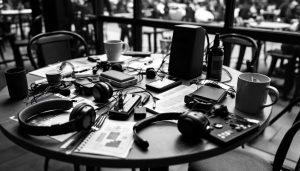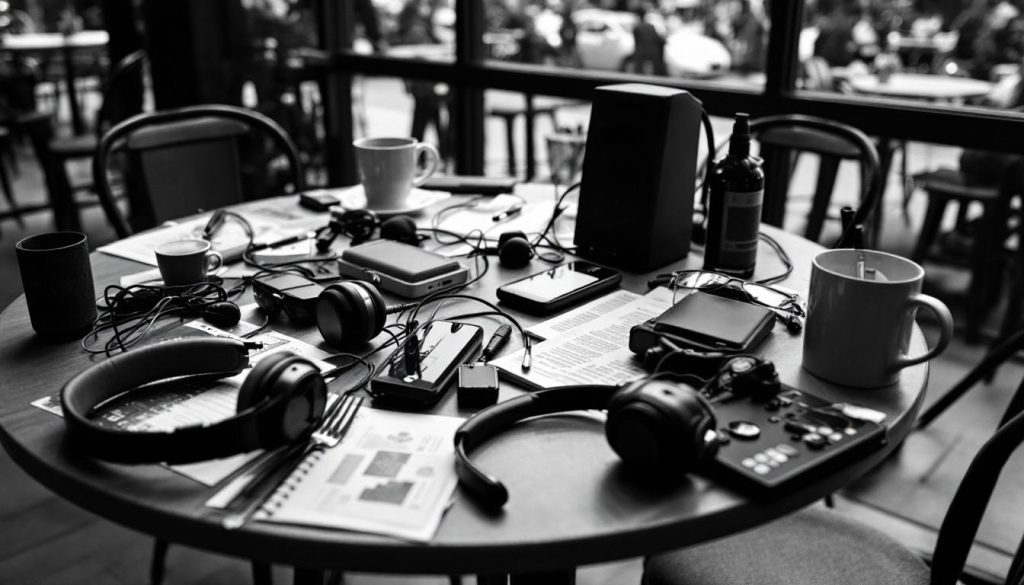Attention Labs, a team of neuroscientists and machine-learning engineers recognised for their award-winning work at NeurIPS, has unveiled a breakthrough technology called Selective Auditory Attention (SAA) that endows devices with human-like hearing capabilities. This advancement addresses a long-standing challenge in auditory artificial intelligence: differentiating multiple simultaneous voices and sounds in real-world settings.
SAA emulates the psychoacoustic phenomenon known as the “cocktail party effect,” whereby the human brain can focus on a single voice amid a noisy environment containing numerous voices at similar volumes. Prior to this, AI struggled to selectively isolate meaningful voices in crowded auditory scenes, leading to muddled soundscapes and poor conversational clarity. According to David J. Kim, CEO and cofounder of Attention Labs, their technology runs locally on devices — from headsets and smart glasses to TVs and robots — delivering crystal-clear audio with millisecond latency and zero reliance on cloud processing. This localised approach not only improves response times but also protects user privacy by ensuring raw audio never leaves the device.
The technology supports flexible microphone setups, from 2 to 8, and maintains approximately 97% accuracy even in challenging settings with crosstalk and overlapping talkers, while accommodating diverse accents. SAA’s embedded engine uses ultra-low power, achieving sub-100 ms latency, which enables seamless integration with other AI systems such as large language models to provide context-aware responses in real time. Attention Labs currently collaborates with major industry players including Meta, Sonos, Nvidia, Intel, Samsung, and Snap to embed this audio clarity technology across a spectrum of consumer and enterprise devices.
The challenge of isolating relevant voices in noisy environments—commonly referred to as the “cocktail party problem”—has drawn interest across several research and tech institutions. For instance, Columbia University engineers have pioneered experimental brain-controlled hearing aids that detect user intent by monitoring brain waves, thereby amplifying desired speech while filtering background noise. This approach aligns machine listening closer to natural human auditory attention by decoding neural signals in real time.
Similarly, Japan’s NTT Laboratories developed SpeakerBeam, a deep-learning system capable of extracting target speech from complex acoustic mixtures by suppressing irrelevant sounds. This technology has promising applications in meeting transcription and other voice-focused services, and is being extended to handle various situational auditory cues for enhanced selective hearing.
On the more foundational neuroscience research front, the Spatial Hearing and Attention Research Lab at the University of South Florida investigates the neural and cognitive mechanisms underlying auditory object formation and segregation. This research informs improved hearing aid design by emphasizing how attention modulates perception to enhance communication in noisy settings—concepts directly integral to the development of AI systems like SAA.
Other innovations include the Biologically Oriented Sound Segregation Algorithm (BOSSA), which mimics midbrain spatial processing to isolate directional sounds for hearing aid users, and visually guided hearing aids (VGHAs) that leverage eye gaze to steer acoustic beamforming toward desired speakers. Although these methods show promise, many still face limitations such as adaptability in real-world reverberant environments or the need for additional sensors.
What distinguishes Attention Labs’ SAA is its real-time, on-device processing with high accuracy, low latency, and zero cloud dependency—traits crucial for privacy and user experience in today’s interconnected devices. By delivering crystal-clear speech separation across a variety of hardware and flexibly adapting to shifting soundscapes, the technology takes a significant step toward machines hearing as humans do. As AI-driven auditory tools become ubiquitous, innovations like SAA promise to transform communication in noisy environments, from hybrid meetings to assistive listening applications and beyond.
📌 Reference Map:
- Paragraph 1 – [1], [2]
- Paragraph 2 – [1], [2]
- Paragraph 3 – [1], [2]
- Paragraph 4 – [5], [6]
- Paragraph 5 – [4], [3], [7]
- Paragraph 6 – [1], [2]
Source: Noah Wire Services


